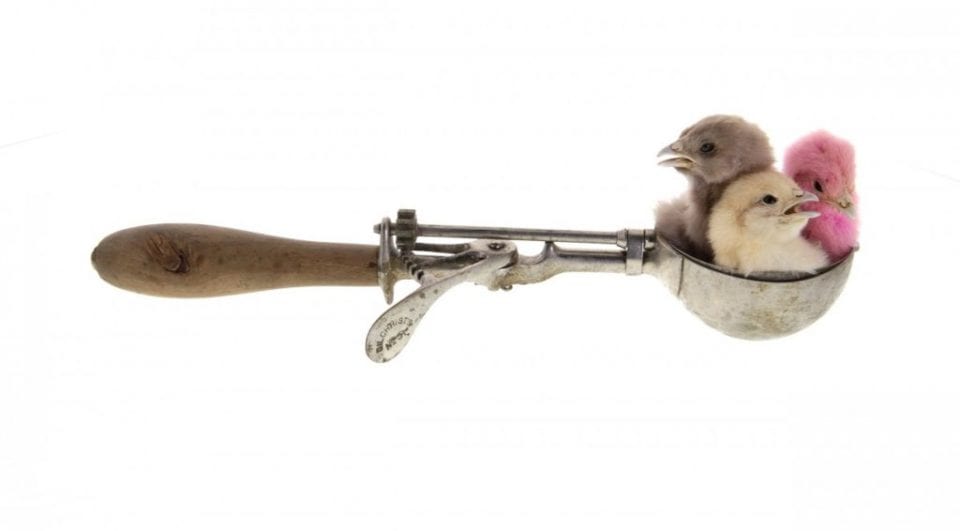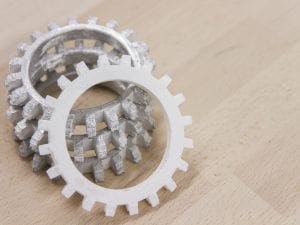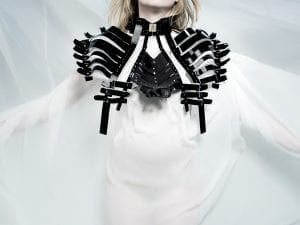For taxidermist and jeweller, Julia deVille, the most considered aspect of creation is composing her subjects to find a balance between pathos, humour and dignified realism.
A: How did you begin to develop an interest in taxidermy and jewellery, and what made you think to combine these two things?
JdV: I can remember wearing my grandmother’s fox fur stoles (where the mouth would bite the tail around your neck) from the age of four. I was fascinated by the fact it was an animal but had no “life” any more. I have been interested in taxidermy ever since. When I was 15 years old I bought my first stag head from an antique store and tried to find a mentor about that time too.
I finally found someone to teach me taxidermy (after about five years of searching) at the same time I enrolled in an advanced diploma in gold and silver-smithing. It was only natural to marry the two crafts together.
Initially I made brooches out of small mice and birds with diamond eyes and silver tails. These works slowly grew and became sculptures adorned with jewellery materials and techniques. I had my first solo show of taxidermy sculptures in 2007 and have been working as a practicing artist ever since.
A: Why do you think taxidermy as an art form is relevant in today’s society?
JdV: I think as a society we are no longer in touch with the origins of the products we consume. Through taxidermy I aim to show my audience the animal forms that are generally presented as fillets in Styrofoam and cling wrap.
I also think we are too far removed from death as a whole and it has become a taboo subject nowadays. I endeavour to engage my audience in a visceral experience of death but in a gentle and beautiful way so they are compelled to think and speak about death more readily.
A: How do you think that your subjects find a line between humour and realism?
JdV: I think when approaching subjects like death and animal rights you need to have a sense of humour. Otherwise the work can be isolating and that is not my desired outcome.
An example of humour in my work would be Neapolitan. This work is a statement on the factory farming industry. Most people these days want to buy free range eggs, however there are many products like ice cream that contain factory farmed eggs and they are not legally obliged to label as such. This work is a light-hearted way to approach a serious subject.
A: Your jewellery evokes the Victorian era in its gothic style and execution. How do your designs bridge the gap between history and contemporary society?
JdV: From the 15th to the 18th centuries, people would adorn themselves with the symbols of death, such as the skull and cross bones (symbolising human mortality), and the hourglass (symbolising the brevity of life). They would also wear Memento Mori mottos like DISCE MORI (learn to die) and MEMENTO MORI (Remember you must die/ Remember Death). These symbols and mottos were used to remind the wearer of their own mortality and the need to prepare for death and their day of judgement before the “Lord.”
The ideas, aesthetics and symbolism used in this period resonated with my own ideas about death. I was already working in taxidermy so I saw my work as a Memento Mori and began developing ideas and taking inspiration from the concepts of the past.
I use these symbols and mottos in my own modern interpretation. Instead of coming from a God fearing place, I see them as a modern Carpe Diem. I believe if we can accept our mortality, we can in turn appreciate the significance of life. Not just our own, but of all living things.
I actually think the Victorians had a healthier outlook on death that we do now. A person’s life was celebrated in mourning jewellery. It was a reminder of a lost loved one. I feel that nowadays death is not approached with the same sentiment and openness. My work is equally about life and death.
Credits:
1. Neapolitan. Courtesy of Julia deVille.





